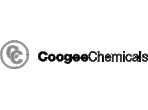Our Work With Fire and Rescue Authorities
IDS works with several Fire & Rescue authorities to ensure proper cleaning, care, and effective decontamination of Personal Protective Equipment (PPE) and Personal Protection Clothing (PPC) used in firefighting.
Our clients include:
- Queensland Fire and Rescue
- Country Fire Service Victoria
- Western Australian Fire Service
- Air Services Australia
- Department of Defence
- Private fire service providers
The Challenge With Fire & Rescue PPE
Internationally, there is a growing concern, that firefighters are being exposed to particulate and other contaminants that contribute to chronic illnesses, including several cancers. Studies show that it is likely that firefighters are being continuously re-exposed to harmful contaminants due to particulates collecting in PPE.
In response, some governments around the world have introduced presumptive legislation that ensures that firefighters who develop certain cancers and other conditions are automatically entitled to compensation and assistance. While such legislation is a welcome development for firefighters who are already ill, it does not address the core issue of ensuring effective decontamination and preventing re-exposure and subsequent illness to begin with.
The Problem With Doing More of the Same
The most common recommendations to address the problem of re-exposure are changes to fire ground management, and more frequent laundering. While changes to fire ground management will help with the spread and re-deposition of contaminants, more frequent laundering presents an entirely new set of problems.
Here are some numbers to provide some clarity…
Since 2010 in IDS facilities in Australia, the average number of washes per garment has increased from 0.8 times per annum to around 3.2 times per annum currently. In real terms, this means firefighters are currently laundering their PPE after very 10-15 fire exposures. That is still nowhere near enough, however, if they were to wash after every fire exposure, it would mean a tenfold or more increase in washing frequency.
From the manufacturer’s point of view, the majority of warranties are for a period of 5 years based on 5 washes per annum for a total of 25 washes for the lifecycle of the garment. This is based on
traditional commercial laundering. Our own trials at IDS have found that a garment can sustain damage that will render it ineffective in protecting the user after just 12 washes in a commercial laundry. The best standard laundry process we have encountered achieves up to 27 washes.
In other words, the best possible process in a standard commercial laundry is only just able to achieve the lifecycle set out by the manufacturers. That is only considering the damage to the item and does not consider whether the wash process has provided effective decontamination.
So, the final outcomes of more frequent laundering in a regular commercial laundry are:
- To incur a massive increase in laundering costs
- To dramatically decrease the life of garments and increase the expense of buying new PPE
- You still do not have complete peace of mind for users that their the PPE has been properly decontaminated
The IDS Solution
The IDS Asset Lifecycle Management System (ALMS) which combines a complete end-to-end stock management system with our specialised cleaning and decontamination process, has proven to be the ideal solution for fire and rescue authorities and organisations.
The system has let them enjoy vastly superior economies of scale and value from their investment, along with the reassurance that staff have PPE that is well cared for and maintained to do the job it is intended for.



















